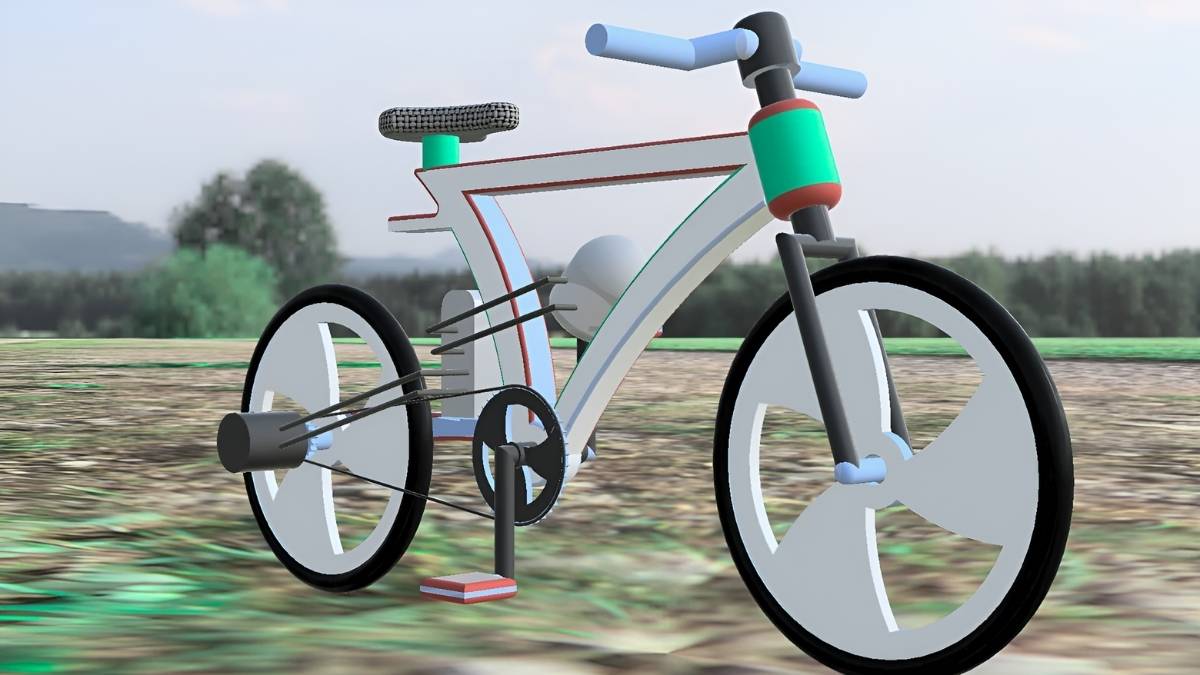The world of cycling is constantly evolving, and the rise of 3D printing technology has opened new doors for enthusiasts, designers, and engineers. One of the most exciting developments in recent years is the concept of a 3D printable bicycle. This innovation allows anyone with access to a 3D printer to create bicycle components, customize designs, and even assemble a fully functional bike from scratch. It is a remarkable fusion of technology, creativity, and sustainability that is reshaping how people approach cycling and personal mobility.
The Concept of 3D Printable Bicycles
A 3D printable bicycle is essentially a bike that can be fabricated using additive manufacturing techniques. Rather than relying solely on traditional manufacturing methods like welding, molding, and casting, 3D printing allows for precise and customizable parts to be created layer by layer from materials such as PLA, ABS, carbon fiber composites, and even metal alloys.
The concept goes beyond just making the bike frame. Designers can create wheels, handlebar stems, pedals, and even smaller components like brackets and gears using a 3D printer. This not only gives users the ability to experiment with unique designs but also enables them to tailor every part of the bike to their personal preferences.
Advantages of 3D Printable Bicycles
One of the most significant benefits of a 3D printable bicycle is customization. Traditional bikes come in predefined shapes, sizes, and styles, but 3D printing allows users to design a bike specifically for their body geometry, riding style, and aesthetic preferences. Whether someone wants an ultra-light racing frame, a robust mountain bike, or a futuristic urban commuter, 3D printing makes it possible.
Another advantage is sustainability. By printing only the necessary parts, there is less waste compared to conventional manufacturing. Additionally, damaged components can be reprinted individually rather than replacing an entire frame or bike, reducing overall material consumption and cost.
Finally, accessibility is a key factor. While not everyone can afford a custom-built bike from a professional manufacturer, 3D printing offers an affordable and approachable alternative. Hobbyists, students, and innovators can experiment with prototypes, learn engineering principles, and gain hands-on experience with modern manufacturing methods.
Designing a 3D Printable Bicycle
Designing a 3D printable bicycle requires a careful balance of creativity, engineering knowledge, and material considerations. Designers typically use CAD software to create detailed digital models of each component. These models must consider factors such as load distribution, structural strength, and ergonomics to ensure the bike is both functional and safe.
One of the most challenging parts to design is the frame, which must support the rider’s weight and absorb the stresses of different terrains. Advanced 3D printing techniques, including lattice structures and reinforced composites, help strengthen the frame while keeping it lightweight. Other components like wheels and handlebars must also be optimized for durability and performance while maintaining printability.
Materials and Printing Technology
The choice of materials plays a crucial role in the success of a 3D printable bicycle. Common plastics such as PLA or ABS are widely used for prototyping but may not offer sufficient strength for long-term use. Carbon fiber reinforced polymers, nylon composites, and even metal filaments provide greater durability and stiffness, making them suitable for functional bikes.
Printing technology is another consideration. Large-format 3D printers capable of producing big parts, such as full frames or large wheels, are ideal. In some cases, components may be printed in smaller sections and assembled later. Advanced printing techniques, including multi-material printing and post-processing treatments, can enhance the performance, finish, and longevity of the bike.
Applications and Potential Impact
3D printable bicycles have applications beyond personal use. Urban planners and mobility companies are exploring 3D printing as a solution for mass-customized bicycles, especially in cities where shared bikes are popular. Educational institutions can use 3D printable bicycles to teach students about mechanical engineering, materials science, and sustainable design.
The technology also encourages innovation. Designers and engineers can rapidly prototype new concepts, test them, and iterate quickly without the financial and logistical constraints of traditional manufacturing. This accelerates the development of cutting-edge bicycles with unique features that would be difficult to achieve using conventional methods.
Challenges and Considerations
Despite its potential, 3D printable bicycles face certain challenges. Material limitations, printer size restrictions, and the need for structural testing are important factors to consider. Safety is paramount, and printed parts must be carefully engineered to withstand real-world conditions.
Furthermore, printing a full bicycle requires significant time and resources. Large-format 3D printers are expensive, and printing durable materials can take many hours or even days. However, ongoing advancements in printing technology and materials are steadily addressing these challenges, making 3D printable bicycles more practical and accessible.
Key Highlights
- 3D printable bicycles allow complete customization of frames, components, and design aesthetics.
- Additive manufacturing reduces material waste and enables sustainable production.
- CAD software and modern 3D printers are essential tools for designing and fabricating parts.
- Advanced materials like carbon fiber composites and metal filaments ensure durability and strength.
- Applications include personal bikes, urban mobility solutions, educational projects, and rapid prototyping.
- Challenges include printer size limitations, material constraints, and the need for rigorous safety testing.
- The technology empowers hobbyists, designers, and engineers to innovate and experiment with bicycle design.
Final Words
The concept of a 3D printable bicycle represents a significant shift in how bicycles are designed, produced, and customized. By merging technology with creativity, this innovation allows individuals to craft bikes that are tailored to their unique needs and preferences. It also promotes sustainability by reducing waste and enabling component-level replacements.
As 3D printing technology continues to advance, 3D printable bicycles are likely to become more accessible, practical, and functional. From hobbyists experimenting at home to engineers developing the next generation of urban mobility solutions, 3D printable bicycles offer endless possibilities. This exciting convergence of cycling and technology is poised to redefine the future of personal transportation, making it more personalized, innovative, and sustainable than ever before.
